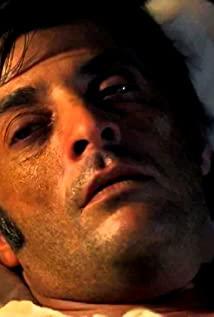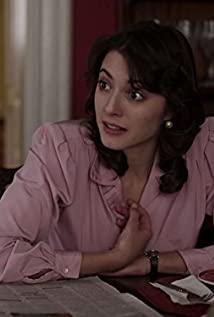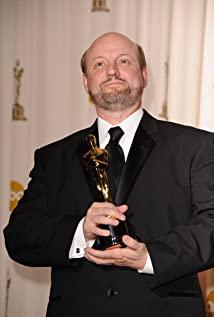When the judiciary loses its only authority and justice under the chaotic political situation, and becomes the thing in the hands of those in power, in the image, there is always a need for a conscience who is willing to strike a stone to maintain justice. He can be A superhero who is invincible and never stops, he can be a burst detective who is angry with violence, but more often he is just a humble ordinary person who is defenseless but rises up to defend his beliefs. , but sometimes he's just a self-disciplined bank clerk, Morales, who runs around three meals a day. Different from the heroic view of the great power and arrogance in American movies, for the "hero" of this Argentine movie, his counterattack does not necessarily need to be sensational, nor does he have to shoulder the burden of helping the world. On the contrary, he is selfish. Yes, he is not a defender of society. It is the name of love that drives him forward, and his struggle in the torrent of history gives him the meaning of revenge. He has been waiting for his own justice for ten years, and he will use the most willful way to display his revenge. Another translation of the film is called "Secrets in Their Eyes". Everyone hides their secrets but reveals their motives through their eyes. Only Morales' eyes are pure and blurred, straightforward and profound. In a sense, he is terrible. His belief is so firm that he is almost paranoid. In order to capture the suspect, he can spontaneously station at the train station for a year. Similarly, his methods are so sharp that they reach the enemy's chest, using the most "kind" way to overwhelm the opponent's ability to bear. He couldn't help but remind me of the murderer in Keigo Higashino's The Relief of the Holy Maiden.
There is another indelible love that runs through the whole film, the detached and ambiguous relationship between Esposito and Irene has become more and more regrettable after more than 20 years of polishing. What is quite commendable here is the screenplay, with director Juan José Campanella also co-writing the screenplay, which is superb except for a bit of procrastination. The two threads of reality and memory form an inseparable whole through the inseparable details. In reality, the entanglement of wanting and rejecting, the memory center understands the feelings of the soul, and the needle and thread connecting the two are worth aftertaste: that machine can’t type letters. A's malfunctioning typewriter, the letter A that separates "fear" and "love", the door that turns around and symbolizes the relationship between the two... Esposito's timidity makes him hesitant to take the last step to express His own feelings, even after a long parting, are just a taste, and the scene of Irene chasing the train has become the pain of his lifelong hatred. What is it that haunts Esposito so that even after 20 years of meeting, it is still unclear? In fact, it's not complicated. It's like a simple letter A. From fear to daring to love is just a single thought, but Esposito, who is a fan of the authorities, has used it for more than 20 years until Irene asked him why he didn't take her with him. He suddenly realized. Fortunately, the film gives a warm ending, which brings a little solace to the love Morales has long been buried in the grave, and also has some hints for the recovery of the political situation in Argentina.
Of course, the most important thing in "Mysterious Eyes" is the long shot in the middle of the film. After thinking about it, I can only feel that it is incredible. Starting from the aerial photography outside the football field, and then capturing a series of wonderful cooperation of the players on the field, finally the football hit the crossbar and suddenly popped out, and the camera came to the audience. At one point I thought the editor should have quietly cut a knife here, otherwise the camera movement is just too weird, regardless of how difficult it is. Afterwards, the camera in the auditorium began to use ordinary follow-up shots. After the "detective duo" discovered the suspect, they started a fast-paced chase. Among them, the style of hand-held camera was seen, especially the violent shaking during the fight. It can be used as a subjective vision lens, and its precise scheduling can be performed at the corner of the stairs, coupled with the subsequent large vertical movement, and finally the field of vision returns to the football field, breaking into the field of competition. China just finished it. The whole scene uses only one shot, which can be said to be smooth and smooth, and it has a variety of styles, which greatly improves the expressiveness of the shot.
Returning to the prudent question mentioned at the beginning, here is a horizontal comparison with "White Ribbon". Also nominated for the Oscar for Best Foreign Language Film, the "hot" of "Mysterious Eyes" and the "cold" of "White" are two diametrically opposite styles. "Mystery" is a piece of finely crafted jade, but the traces of artificiality are difficult to conceal; "White" is a plain jade with a plain face to the sky, which to some extent has won the legacy of the old generation of European film masters. It is also suspense. In "Mystery", it is the climax of the whole film, and it is its killer. It must be kept until the end before it can be revealed. The ambiguous position buried the truth in the flames of World War I, and then left a big question mark - not the plot but the moral. They are also long shots. "Mystery" has carefully crafted mirror movements and strict actor positions to emphasize the sense of depth; "Bai" is much simpler and simpler, and it often follows the characters to a certain range. It turned back the same way, and did not cut anything during the period. On the issue of scale, "Mystery" also seems to be suspected of grandstanding, "White" has cheating scenes but it is relatively conservative, "Mystery" has scenes that directly show the lower body, although there are many symbolic intentions, but please don't be so flamboyant and impactful It's strong, but it's hard to overdo it. By the way, when Esposito finally discovered the truth, in addition to shock and reflection, the biggest rhythm problem also followed. The director refused to let the scene end like narcissism. You have already understood everything. The message continues to stimulate your eyeballs with images and incite your eardrums with soundtracks. The passage of chasing the train is very lethal and iconic, but there is no need to appear twice as it is. Wouldn’t it be more diverse to use fragmented silhouettes interspersed in the film? "Mysterious Eyes" and "White Ribbon" are originally different in terms of styles, and it is difficult to compare the standards with different standards, but the former cannot hold back in the place where it should be restrained, and has successfully mobilized emotions. Still crying tirelessly. These rights should be regarded as nitpicking on the basis of the film's good quality.
View more about The Secret in Their Eyes reviews











